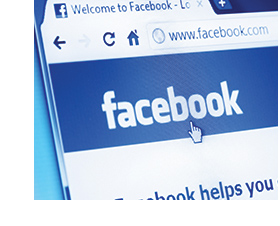It’s a necessary tool in today’s marketing and communications landscape, but how well is your organisation’s Facebook account working for you? Many not-for-profits rely on Facebook to connect with existing and potential clients and members, and many people use Facebook to connect with organisations they are interested in.
You may have invested countless hours and dollars into growing your Facebook following, but when you look at statistics from each of your posts, how many are actually connecting with your audience?

Despite people following your page because they want to hear directly from your organisation, Facebook still decides if and when people actually do receive the information you share. This is down to a complicated algorithm that minimises the amount of people the post is shown to. However, there’s one undisputed method to make sure people see your post: boost it. This means you have to spend money to ensure that your audience sees your posts. Put simply, Facebook’s business model for organisations is to sell your audience back to you.
It used to take a well-written post, a captivating image or an accompanying video to increase your social media reach. Now, targeted spending on advertising has overtaken any attempts at growing reach organically. This means that for a not-for-profit that relies on donations, it would have to use some of these donations in order to engage with the donors who follow it’s Facebook page. Unlike some other web corporations, such as Google, which offers the Google Ad Grants to not-for-profits, Facebook offers no exceptions for not-for-profits. This means that a small charity relying solely on donations must have a Facebook advertising budget, just like large corporations do.
In January this year, Facebook also changed its News Feed algorithm to prioritise content from families, friends and groups. This means that Facebook will be publishing less posts from businesses and organisations, and boosted posts and ads are more important now than ever.
There are other ways that you can still connect with your audience on Facebook. They include:
- asking followers to prioritise your content – encourage your followers to add your page to their ‘See First’ list
- using Facebook groups – join a Facebook group relevant to your organisation or start one of your own
- emphasising interaction – the new algorithm will prioritise posts that “spark conversations and meaningful interactions”, which means that you need to engage followers and keep the discussion going.
How else can you connect with your audience? If you’re not getting the reach you’d like on Facebook, the humble email newsletter can be much more effective. People have chosen to subscribe because they want to hear from you, and you know that your messaging will be delivered right into their inbox.
If you need help setting up or managing your organisation’s email newsletter, we can help you. We provide regular, ongoing communications services to a range of disability and community organisations. Please contact us for more information.


